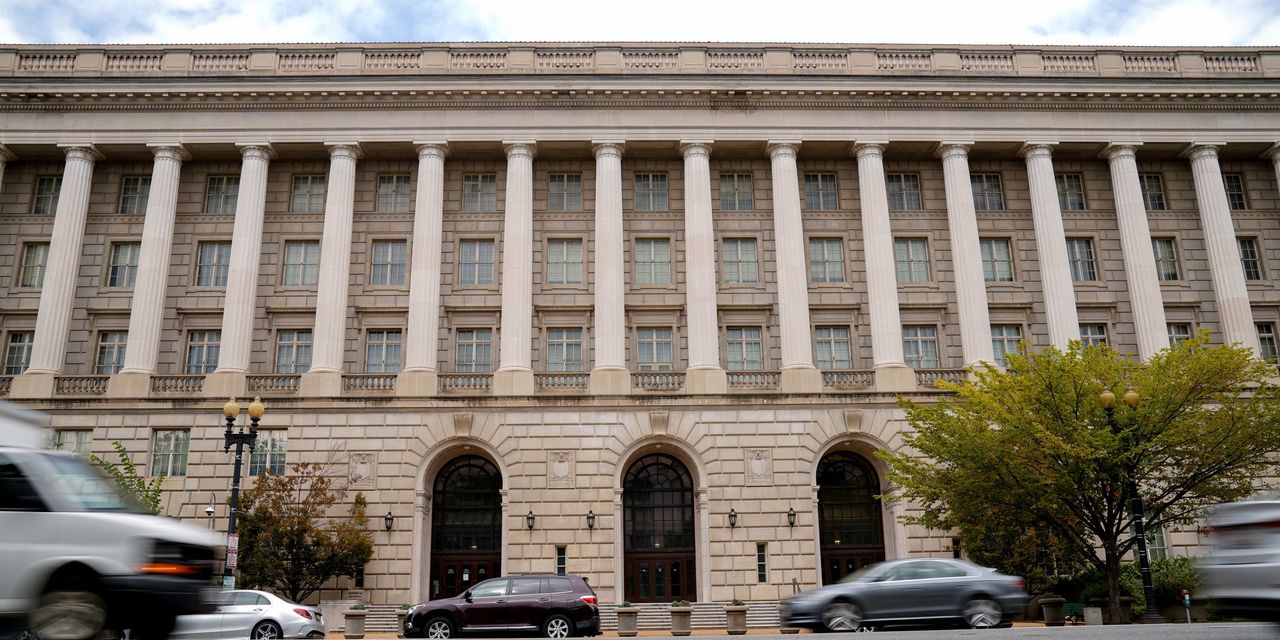Inflation is about to ripple through the tax code—and the nation’s mishmash of tax provisions means some people will be hurt and some won’t.
As inflation trends near a 13-year high, middle-income workers will benefit from automatic annual adjustments to tax provisions such as the standard deduction for income taxes. Some other provisions are frozen in time, stuck to specific dollar amounts from decades ago. Those provisions tend to pinch higher-income households.
For example, the standard deduction for married couples is likely to rise to $25,900 from $25,100, according to
Wolters Kluwer
NV, which provides tax services to accountants and others. As nominal wages and prices rise, that adjustment will shield more money from taxation and block inflation—currently above 5% on an unadjusted annual rate—from causing a sharp tax increase.
Some home sellers, however, will be squeezed because married couples can exclude up to $500,000 in gains from capital-gains taxes. That figure hasn’t changed since a 1997 law, while the median home sale price has more than doubled since then.
“It is a bit of a patchwork quilt,” said Mark Prater, a managing director at PwC LLP and a former Senate Republican tax aide who helped write that 1997 law. “At that time anyway, folks thought, OK, we’ll come back and look at this on the question of the amount. But we never did. We just never did.”
Every year, the tax code requires the IRS to adjust dozens of provisions for inflation based on changes in consumer prices. The agency is likely to announce the 2022 figures in the coming weeks.
The standard deduction and tax-bracket levels, which matter most to middle-income taxpayers, should increase by about 3.1%. That is about double many of the prior year’s increases, according to Wolters Kluwer.
The result should be larger paychecks in January, after the IRS and payroll providers update paycheck-withholding calculations. Even for wages that are flat from December to January, take-home pay will likely rise slightly for many because less money will be withheld for taxes, helping workers cope with rising prices.
“For a lot of people on a short-term basis, absolutely this will look like a tax cut and feel like one,” said John Ricco, an economic analyst for the University of Pennsylvania’s Penn Wharton Budget Model. “For others, they have gotten a lot poorer in real terms” because of what they are buying.

The expected increases in many of the tax-related provisions will be smaller than the 5.9% boost in Social Security benefits.
Photo:
Associated Press
People encountering a tax provision that isn’t indexed for inflation—such as the $3,000 limit on deductible capital losses against ordinary income, a $25,000 income-tax exclusion for Social Security benefits or that $500,000 cap on tax-free home sales—will be hurt more during a period of higher inflation as those benefits erode faster.
The expected increases in many of the tax-related provisions will be smaller than the 5.9% boost in Social Security benefits and similar to the 2.9% increase in the maximum wages subject to Social Security taxes. That is because they generally follow different rules. The 2017 tax law switched to a formula that relies on a typically smaller measure of consumer inflation than the Labor Department’s headline consumer-price index. Increases for tax-advantaged retirement plans follow a different formula.
Beyond the brackets and standard deduction—and beyond whatever Congress does this fall to change taxes more dramatically—Wolters Kluwer also expects other tax-code features to change. The annual limit on tax-free gifts could climb to $16,000 from $15,000, and the maximum for a healthcare flexible spending account could increase to $2,850 from $2,750.
The confusing state of affairs stems from deliberate decisions by Congress over the past 40 years. The biggest move came in 1981, when lawmakers tied the brackets to inflation as part of President Ronald Reagan’s tax cuts.
Before that, during high inflation in the late 1970s, brackets stayed fixed unless Congress moved them with new laws. When incomes and prices rise but brackets stay fixed, more income is taxed at higher rates—a phenomenon known as bracket creep.
But Congress didn’t tie everything to inflation, leaving some features static. Those decisions were often intentional as legislation was written over ensuing decades, Mr. Prater said.
Setting a dollar cap and leaving it unchanged can operate as a stealth tax increase—over a long time when inflation is low and a shorter time when it is high. Lawmakers can count on receiving projected revenue from setting a static number, even if they expect a future Congress to change it.
For example, a 2010 law included new taxes on investments and wages that take effect when income reaches $200,000 for individuals and $250,000 for married couples, matching levels that then-President
Barack Obama
had set during his campaign.
Share Your Thoughts
What implications will higher inflation have for you? Join the conversation below.
More people pay those taxes now than they did then, but that expansion hasn’t spurred many calls for change, even though the Democratic Party’s threshold for where tax increases could start climbed to $400,000.
“If Congress does not inflation-adjust something, they are effectively saying we want this provision to apply, ultimately, to a very broad swath of taxpayers, but we’re willing to let that build over a number of years,” said Jim Young, an accounting professor at Northern Illinois University.
The same is true for the $3,000 limit on capital losses that can be deducted from ordinary income, a level that took effect in 1978. If adjusted for inflation, that figure would be more than $13,000 today.
“Why they set it at $3,000 I’m not sure,” said Mark Luscombe, principal analyst at Wolters Kluwer. “Maybe the logic of the $3,000 wouldn’t look so good at this point.”
Congress is still creating similar challenges elsewhere in the tax system. In 2017, lawmakers created a $10,000 cap on the deduction for state and local taxes and didn’t tie it to inflation. So as state and local taxes rise, more people will be affected by the cap.
The child tax credit isn’t pegged to inflation either. Instead, Congress has periodically increased it—from $500 to $1,000 to $2,000 to $3,000 in jumps that have occurred over the past 20 years.
Write to Richard Rubin at richard.rubin@wsj.com
Copyright ©2021 Dow Jones & Company, Inc. All Rights Reserved. 87990cbe856818d5eddac44c7b1cdeb8













































